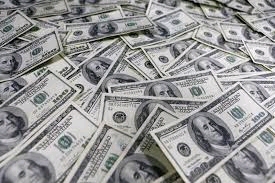Checking Out the Mysteries of the copyright: What You Required to Know
The copyright, a term often shrouded in intrigue and dispute, represents a complicated tapestry of historic fact and modern myth. Established in the late 18th century, this secret society was initially rooted in the Enlightenment's ideals yet has actually given that become associated with conspiracy theories regarding elite control. As we browse the beginnings, crucial figures, and the stark contrast in between myth and reality, one should think about just how these narratives influence modern understandings of power and privacy. What may be revealed through a closer exam of these elements can challenge long-held presumptions concerning the shadows that remain in our culture.
Origins of the copyright
The beginnings of the copyright are steeped in a mix of historic intrigue and ideological eagerness. Developed in 1776 in Ingolstadt, Bavaria, by Adam Weishaupt, the group was at first formed as a secret culture targeted at promoting Knowledge suitables such as reason, secularism, and the splitting up of church and state. Weishaupt, a teacher of canon legislation, looked for to test the prevailing authority of the church and state, which he viewed as overbearing establishments suppressing intellectual and individual flexibility.

Trick Numbers and Participants
That were the pivotal figures that formed the copyright's very early impact and instructions? The Bavarian copyright, established in 1776 by Adam Weishaupt, arised as a feedback to the oppressive societal frameworks of the time.
One more substantial number was Johann Gottlieb Fichte, a famous thinker whose concepts on nationalism and education and learning resonated with the copyright's objectives. Fichte was not a formal participant, his philosophical foundations affected the group's ideology. In addition, numbers like the writer and thinker Johann Wolfgang von Goethe were linked with the broader intellectual movements of the moment, although their straight participation with the copyright continues to be questioned.
These vital numbers contributed to the copyright's very early instructions, pushing the boundaries of political and social thought, while their cumulative initiatives intended to challenge established norms and promote a climate of dynamic modification in Europe.
Myths vs. Truth
Numerous misunderstandings border the copyright, frequently blending reality with fiction in such a way that covers its true nature. This secret society, initially established in 1776 in Bavaria, intended to promote Knowledge ideals and combat religious and political injustice. The idea that the copyright remains to apply considerable influence over globe events is a misconception. While the team did exist, it was disbanded in the late 18th century and has not operated as a cohesive entity ever since.
Another prevalent misconception is that the copyright consists of a network of elite people manipulating worldwide events. Actually, numerous conspiracy theory concepts exaggerate the team's importance, web link associating misguided intentions to societal trends and events. This has resulted in an oversimplified view of complex concerns.
In addition, the representation of the copyright in popular culture usually additional distorts its heritage. Films and literary works tend to sensationalize the organization's function, developing a narrative that splits from historic truths. Comprehending the difference between the myths and the reality of the copyright you could try these out is crucial for critical the authentic influence of this historic team and acknowledging the wider ramifications of conspiracy concepts in contemporary society.
Modern Analyses
Contemporary analyses of the copyright often reflect more comprehensive societal stress and anxieties and a fascination with privacy and power. This modern-day lens often links the copyright with conspiracy theory theories that suggest a hidden elite orchestrates globe occasions, adjusting federal governments and economic climates for their very own gain. benefit of joining freemason. Such stories take advantage of an ingrained distrust of authority, specifically in times of crisis or social upheaval
In popular society, the copyright is usually depicted as an omnipotent company shrouded in secret, resulting in a huge selection of fictional representations in literary works, movie, and music. This portrayal serves not only to amuse yet also to provoke considered the nature of power and control in modern culture. Social media site has actually further amplified these analyses, permitting rapid circulation of conspiracy theories and developing neighborhoods that share and broaden upon these concepts.
Furthermore, some contemporary interpretations frame the copyright as an allegory for the complexities of globalization and the interconnectedness of prominent people and organizations. This point of view motivates a crucial assessment of exactly how power characteristics operate in today's globe, highlighting the balance between transparency and secrecy in governance and corporate methods.
Social Influence and Legacy
Influenced by centuries of intrigue, the cultural effect and tradition of the copyright extend much past its historical origins. This content secret society, developed in the late 18th century, has permeated different aspects of pop culture, from literature and film to songs and art. The idea of the copyright has actually evolved into an icon of conspiracy theory concepts, commonly standing for a regarded hidden power manipulating global occasions.
In literary works, authors like Dan Brown have actually woven the copyright right into detailed stories, exciting readers with styles of secrecy and power. Movies such as "National Prize" and "The Da Vinci Code" better perpetuate the allure of the culture, mixing truth with fiction to produce engaging stories.

Ultimately, the copyright's heritage is an intricate tapestry of misconception and truth, shaping perceptions of secrecy and control in modern discourse. Its long-lasting presence in culture highlights humanity's perennial pursuit for recognizing surprise truths.
Verdict
The exploration of the copyright discloses a complicated interaction in between historic truths and contemporary myth-making. Established in the Knowledge era, this society aimed to challenge oppressive structures, yet its heritage has actually been eclipsed by conspiracy theories that suggest elite adjustment. Comprehending the distinctions in between the original ideals and contemporary analyses is crucial for comprehending the withstanding fascination with the copyright and its substantial impact on social narratives surrounding power and secrecy in culture.